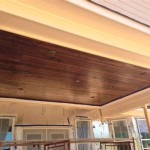Ceiling Fan Oil: What You Need to Know About Its Parts
Ceiling fans are a popular and efficient way to keep cool and comfortable in homes and offices. However, like any mechanical device, ceiling fans require regular maintenance to ensure they operate smoothly and quietly. One essential aspect of ceiling fan care is lubrication. This article will delve into the specifics of ceiling fan oil, its various parts, and their significance for optimal fan performance.
1. Types of Ceiling Fan Oil
Ceiling fan oil is specifically designed for use in these appliances. It is typically formulated with light mineral oil or synthetic oils that offer excellent lubricity and resistance to evaporation. These oils are designed for various situations, depending on the fan's age, usage, and environment.
Here are some key types of ceiling fan oil:
- General-Purpose Oil: This type is suitable for most ceiling fans and provides adequate lubrication in normal operating conditions.
- Silicone-Based Oil: Silicone oil offers exceptional heat resistance and is ideal for fans operating in high-temperature environments.
- Dry Lubricants: These are typically applied in a spray form and create a thin, dry film that reduces friction without attracting dust or dirt.
2. Understanding the Parts Requiring Lubrication
Ceiling fans consist of several moving parts that benefit from regular lubrication. These parts include:
- Motor Bearings: The motor bearings are the most crucial components requiring lubrication. They support the fan's rotating shaft and reduce friction during operation.
- Blade Hubs: The blade hubs connect the blades to the fan shaft. Lubricating these hubs ensures smooth blade rotation and prevents unnecessary noise.
- Switch Mechanism: Ceiling fan switches, especially older models, may have moving parts that benefit from lubrication. However, excessive oiling can attract dust and dirt, hindering the switch's operation.
3. The Importance of Proper Lubrication
Proper lubrication is crucial for maintaining optimal ceiling fan performance. Insufficient lubrication can lead to a variety of issues, including:
- Increased Noise: Lack of lubrication results in increased friction between moving parts, generating loud humming, squeaking, or rattling noises.
- Reduced Efficiency: Friction caused by insufficient lubrication reduces the fan's motor efficiency, requiring more energy to operate and potentially leading to premature motor failure.
- Premature Wear and Tear: Friction from inadequate lubrication contributes to faster wear and tear on moving parts, shortening the fan's lifespan.
- Safety Concerns: In severe cases, insufficient lubrication can cause the motor to overheat, potentially leading to a fire hazard.
4. Lubrication Techniques
Applying ceiling fan oil requires caution to ensure proper lubrication without hindering the fan's operation. Here are some general guidelines:
- Disconnect Power: Always disconnect the fan's power source before attempting any lubrication. Failure to do so poses a significant electrical hazard.
- Clean Thoroughly: Before applying oil, carefully clean the fan's motor housing, bearings, and blade hubs using a soft cloth and denatured alcohol. This removes dust, dirt, and old oil.
- Apply Sparingly: Use a few drops of oil per bearing or hub. Avoid over-oiling, as it can attract dust and dirt, hindering the fan's operation.
- Let it Sit: Allow the oil to penetrate the bearings and hubs for a few minutes before reassembling the fan.
- Wipe Excess Oil: After reassembly, wipe away any excess oil that has accumulated on the fan's surface.
5. Maintaining Your Ceiling Fan
Regular lubrication is an essential part of maintaining your ceiling fan. Over time, the oil will gradually evaporate or become contaminated, reducing its effectiveness. The frequency of lubrication depends on several factors, including the type of oil used, the fan's usage, and the environment. It is generally recommended to lubricate your ceiling fan at least once a year or when you notice increased noise or vibration.
In addition to lubrication, regular cleaning and inspection of your ceiling fan are crucial for maintaining its optimal performance and extending its lifespan. Cleaning the fan blades and motor housing regularly will remove dust and dirt, improving airflow and preventing motor overheating.

Ceiling Fan Maintenance Tips For Homeowners Pro Electrician

Parts For A Bellina 42 In Oil Rubbed Broe Ceiling Fan With Light Kit

Parts Only Glendale 52 Led Oil Rubbed Broe Ceiling Fan Replacement

Koho 52 Indoor Ceiling Fan With Led Lights And Remote Dan S City Fans Parts Accessories

St Augustine 59 In Indoor Outdoor Oil Rubbed Broe Ceiling Fan With Light Dan S City Fans Parts Accessories

Ceiling Fans Minka Aire 52 Fan F547 Orb

Brookhurst 52 In Indoor Oil Rubbed Broe Ceiling Fan Replacement Parts

Kichler Hatteras Bay 56 5 Blade Ceiling Fan Brass Com

Airetor Indoor Ceiling Fan

Harbor Breeze Newhaven 52 In Ceiling Fan With Light Kit 5 Blade At Com
Related Posts








